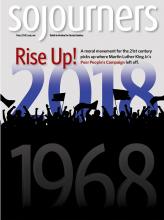GENTRIFICATION DOESN'T look the same everywhere, but it is happening in most major cities in the U.S. And this isn’t just about the brewpubs, the coffee shops, or even the “cash for houses” signs. As Peter Moskowitz writes in his book How to Kill a City: “Gentrification is the most transformative urban phenomenon of the last half century, yet we talk about it nearly always on the level of minutiae.”
The underlying connection is the economic reality: “Gentrification is a system that places the needs of capital (both in terms of a city budget and in terms of real estate profits) above the needs of the people,” Moskowitz writes. This came up often as I talked with people involved in the complex world of housing and development.
Christian theology offers compelling reasons why individuals and communities can and must care about this dynamic. At the core of Christianity is the call toward love of neighbor. When the poorest of your neighbors continually face the brunt of a system designed not to care about them, gentrification becomes a church issue.
Read the Full Article

